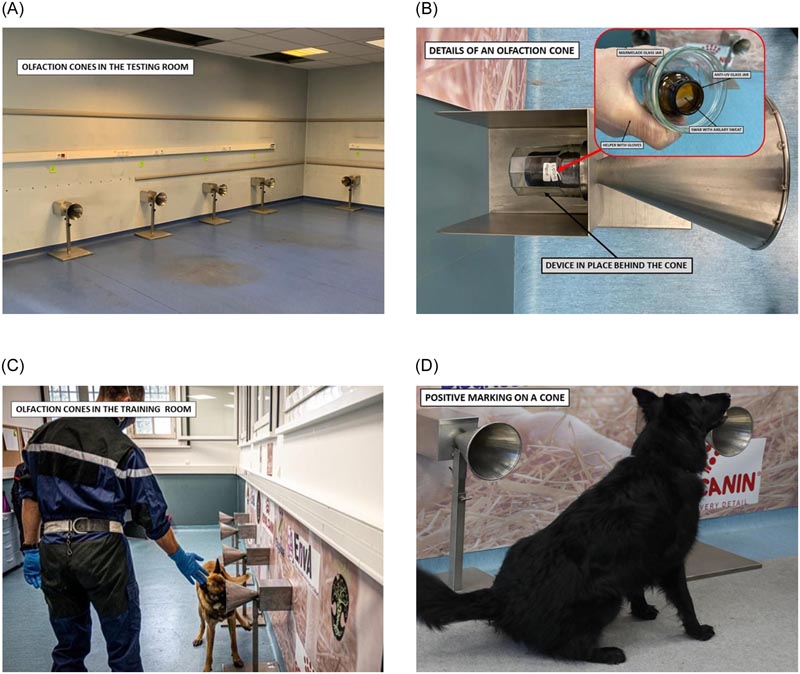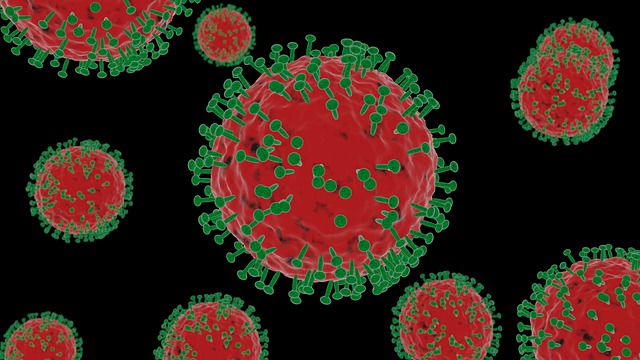Faced with the COVID-19 crisis, early and efficient screening is required to limit the spread of the virus, allowing the timely isolation of positive cases, a key action in this constant fight. Currently, most ongoing COVID-19 diagnostic testing involves nasopharyngeal swabs for RT-PCR, point-of-care nasopharyngeal antigen testing, or saliva RT-PCR to identify the pathogen. Nasopharyngeal sampling for RT-PCR is the reference test, but it has the drawback of invasiveness and discomfort (nasopharyngeal sampling) and/or delay (RT-PCR) in obtaining the result.
Volatile organic compounds ( VOCs) have the potential to become a revolutionary, non-invasive approach for medical diagnosis in humans of conditions such as cancer and degenerative or infectious diseases. Aksenov studied VOCs produced by B cell cultures infected by three influenza viruses: avian H9N2, avian H6N2, and human H1N1. The VOC families collected were found to be unique and specific for each viral subtype. The authors concluded that minor virus-induced alterations in cell genome expression resulted in a specific change in VOC production in cellular metabolism.
Recently, Abd El Qader demonstrated the specificity of bacterial or viral species in VOCs produced by infected cell cultures. Schivo also identified a specific volatilome in respiratory tract cells infected by a rhinovirus.
Canine olfactory detection capabilities have been used for years in law enforcement to detect narcotics or forensic remains, explosives, banknotes, for human search and rescue missions, and even to locate land mines.
Our hypothesis , the subject of our previous proof of concept, was based on the possible excretion of specific VOCs in sweat , induced by actions or cellular replications of SARS-CoV-2 that generate VOCs that dogs can detect.
The objective of this prospective blinded multicenter study was to compare the diagnostic accuracy of the detection of SARS-CoV-2 infection by canine olfaction with the current reference standard (nasopharyngeal RT-PCR) and two alternative diagnostic strategies (nasopharyngeal antigenic test and saliva RT). -PCR) in community testing centers.
Background
Throughout the COVID-19 pandemic, testing people remains a key action. One approach to rapid testing is to consider the olfactory capabilities of trained detection dogs.
Methods
Prospective cohort study in two community COVID-19 detection centers. Two nasopharyngeal swabs (NPS), one saliva, and one sweat sample were collected simultaneously. The dog handlers ( and the dogs... ) were blinded to Covid status.
The diagnostic accuracy of non-invasive detection of SARS-CoV-2 infection by canine olfaction was evaluated in comparison with nasopharyngeal RT-PCR as the reference standard, saliva RT-PCR, and nasopharyngeal antigen testing.
Results
335 outpatient adults were included (143 symptomatic and 192 asymptomatic). Overall, 109/335 participants tested positive by nasopharyngeal RT-PCR in symptomatic (78/143) or asymptomatic (31/192) participants.
The overall sensitivity of canine detection was 97% (95% CI, 92 to 99) and even reached 100% (95% CI, 89 to 100) in asymptomatic individuals compared with NPS RT-PCR.
Specificity was 91% (95% CI, 72 to 91), reaching 94% (95% CI, 90 to 97) for asymptomatic individuals .
The sensitivity of canine detection was higher than that of nasopharyngeal antigen testing (97% CI: 91 to 99 versus 84% CI: 74 to 90, p = 0.006), but the specificity was lower (90% CI ). : 84 to 95 versus 97% CI: 93 to 99, p = 0.016).
Conclusions
Non-invasive detection of SARS-CoV-2 infection by canine olfaction could be an alternative to NPS RT-PCR when it is necessary to obtain a very rapid result according to the same indications as antigenic tests in the context of mass screening.

A: Testing room with its sniffing cones. B: Detail of a scent cone, with a double-protected sample and without the possibility of direct contact with the dog. C: Process involving olfactory cones and dog. D: positive marking by a dog, sitting in front of a cone containing a positive sample.
Discussion
Our results show the excellent sensitivity of SARS-CoV-2 detection in dogs using nasopharyngeal RT-PCR as a reference for comparison. These results are consistent with results previously obtained in proof-of-concept studies using sweat in hospitalized patients.
To our knowledge, this study is the first conducted prospectively in the context of SARS-CoV-2 screening and the first to compare dog screening and antigenic testing.
The detailed results showed no real difference in the sensitivity observed in the different subgroups: the sensitivity is always above 95% when the specificity ranges between 83% and 95%.
The results obtained by canine detection using sweat samples are comparable to those of nasopharyngeal antigenic tests. However, canine detection using sweat samples is less invasive than antigenic testing on nasopharyngeal samples. Thus, the detection of SARS-CoV-2 infection in dogs could be an alternative to antigenic tests.
In conclusion , the results obtained in our prospective study with 335 people who voluntarily presented themselves at one of the APHP testing centers in Paris support the use of canine olfaction as an alternative to antigenic testing. Canine tests are non-invasive and provide immediate and reliable results. The overall sensitivity of Covid detection by trained dogs was 97% and “even reached 100% in asymptomatic individuals” compared to nasopharyngeal swab PCR testing. Overall canine sensitivity to CRP (97% CI: 91 to 99 vs. 84% CI: 74 to 90, p = 0.006), Regarding antigenic tests, positive results must be confirmed by RT-PCR, especially for the detection of variants. Additional studies will focus on direct dog sniffing to evaluate sniffer dogs for mass pre-testing at airports, ports, train stations, cultural activities or sporting events. Armpit sweat testing could still be useful for testing small populations or for mobile units operating in local groups as an alternative to antigenic testing. |
















